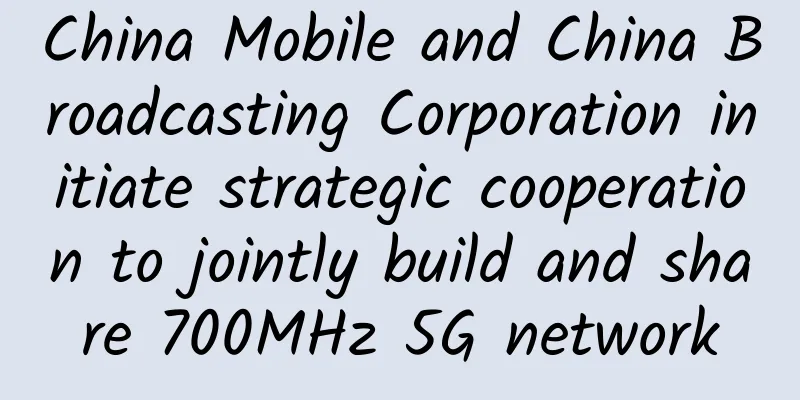The 5G R16 standard is frozen. What does it mean?

|
On July 3, 3GPP announced the completion of the second version of the 5G standard specification R16.
So what exactly is R16 about? Considering that expansion into vertical industries is the highlight of R16, this article divides the main functions of R16 into two categories: "expansion into vertical industries" and "function enhancement". Expanding into vertical industries 5G+TSN In order to expand potential industrial Internet use cases, such as factory automation, power grid distribution automation, etc., R16 supports the integration of 5G and TSN (Time Sensitive Networking). What is TSN? Traditional Ethernet technology can only achieve "best effort" communication and cannot meet the high reliability and low latency requirements of industrial manufacturing applications. Therefore, for industrial automation, the traditional "best effort" Ethernet needs to be upgraded to provide "deterministic" services. At the same time, there are many existing industrial protocols that are isolated from each other and use different "languages", which not only makes real-time communication difficult, but also makes it difficult to achieve unified integration, increasing maintenance and operating costs. In this context, TSN came into being. It is defined by IEEE and can provide deterministic services based on standard Ethernet technology, and provide standardized, unified and economical solutions. 5G+TSN, that is, the integration of 5G system and TSN network, based on the low latency and high reliability capability of 5G uRLLC, meets the four stringent functional requirements of TSN architecture: time synchronization, low latency transmission, high reliability and resource management. After the integration of 5G and TSN, 5G NR wireless can replace the wired network in the factory, making industrial production more flexible. uRLLC Enhancement In order to support the low-latency and high-reliability communication needs in the industrial field, the 3GPP R15 version mainly uses technologies such as larger subcarrier spacing (numerology), Mini-slots, fast HARQ-ACK, Pre-scheduling, etc. to reduce air interface latency, and uses technologies such as PDCP replication transmission and enhanced transmission system parameters for data and control channels to improve transmission reliability. The R16 version will further enhance uRLLC through multiple features such as PDCCH monitoring function, support for multiple HARQ-ACK, out-of-order PUSCH scheduling, UE priority and multiplexing. For example, in terms of reliability enhancement, R15 supports PDCP layer diversity transmission of two branches, that is, data packets are replicated at the PDCP layer, and then the same data is transmitted on two wireless links to resist the impact of deteriorating wireless environment and ensure the reliability of communication links. In order to further enhance reliability, R16 has enhanced the PDCP replication mechanism, supporting up to 4-way replication data transmission, and enhanced the control of activating/deactivating PDCP replication. Non-Public Network (NPN) NPN, Non-Public Network, is a dedicated network based on the 3GPP 5G system architecture. It extends 5G beyond traditional public mobile networks and is crucial to enabling the digital transformation of vertical industries. NPN includes two deployment modes: independent deployment and non-independent deployment, namely SNPN (independent non-public network) and PNI-NPN (public network integrated NPN). In the non-independent deployment mode, vertical industries can build 5G private networks by sharing RAN, core network control plane, or the entire end-to-end 5G public network (i.e., end-to-end network slicing) with operators based on 5G network slicing technology. In the independent deployment mode, vertical industries independently deploy the entire 5G network from base stations to core networks to cloud platforms, which can be isolated from the operator's 5G public network. This means that equipment information, control plane signaling traffic, user plane data traffic, etc. within the factory or park will not leave the park, which can meet the strict data security, low latency and high reliability requirements of the industrial field. Of course, for non-production services such as voice and Internet access within the park, they can also be interconnected with the operator's public network through firewalls. So where do spectrum resources for vertical industries come from in an independent deployment model? They can be leased from operators or applied for from regulatory agencies. For example, Germany and Japan have allocated dedicated network frequency bands specifically for vertical industries. Industrial giants can use them by applying to the government and paying the corresponding fees. NR-U The operator's 5G public network operates on licensed spectrum, which is the cornerstone for providing wide coverage and high-quality 5G wireless services. However, the 5G public network also needs unlicensed spectrum to supplement capacity, just like today's LTE and Wi-Fi coexist and complement each other. So here comes 5G NR-U. 5G NR-U, the full name of which is 5G NR in Unlicensed Spectrum, is 5G NR that works in unlicensed spectrum. It makes 5G NR work in the unlicensed frequency bands of 5GHz and 6GHz. 5G NR-U includes two modes: LAA NR-U (Licensed Spectrum Assisted Access NR-U) and Stand-alone NR-U (Independent NR-U). LAA NR-U relies on the operator's licensed spectrum and uses the operator's NR licensed spectrum as an anchor point to "aggregate" unlicensed frequency bands to utilize unlicensed spectrum resources to enhance the operator's network capacity and performance. It is especially suitable for indoor places with large crowds, such as stadiums and shopping malls. Stand-alone NR-U does not require licensed spectrum as an anchor point, and can deploy a single 5G access point or 5G private network on unlicensed spectrum completely independently. This is the same as the model of self-built Wi-Fi networks by enterprises today, except that 5G NR technology is used. 5G LAN 5G LAN supports the construction of a Layer 2 forwarding network between a group of access terminals, and implements data exchange and user plane path selection within the terminal group through the interaction between 5G SMF and UPF. 5G LAN provides group management services, allowing a third party (AF) to create, update, and delete groups, as well as process 5G virtual network (VN) configuration data in the network and the configuration of group member UEs. 5G V2X As we all know, Cellular Vehicle-to-Everything (C-V2X) aims to connect vehicles to the Internet, as well as connect vehicles to vehicles, vehicles to people, and vehicles to road infrastructure to realize information exchange between vehicles and the outside world, including connectivity between V2N (vehicle and network/cloud), V2V (vehicle and vehicle), V2I (vehicle and road infrastructure) and V2P (vehicle and pedestrians). V2X messages can be transmitted between the base station and the UE via the Uu interface, or directly transmitted between UEs via the Sidelink interface (also known as PC5), i.e., direct communication between devices. In order to expand cellular networks to the automotive industry, 3GPP introduced LTE V2X in R14, and then enhanced the functions of LTE V2X in R15, including carrier aggregation on the Sidelink interface, support for 64QAM modulation, and further reduction of latency. Entering the 5G era, 3GPP R16 version officially began to study V2X technology based on 5G NR, in order to provide more advanced V2X services through 5G NR's lower latency, higher reliability and higher capacity. The Release 16 version of NR V2X is complementary and interoperable with LTE V2X, and defines support for 25 advanced V2X use cases, which mainly include four major areas:
NR Positioning In the 5G era, a large number of applications require precise positioning, such as industrial AGV, asset tracking, etc., especially precise indoor positioning. However, satellite positioning cannot be used indoors, and LTE and WiFi positioning technologies are not accurate. For this reason, 5G has added a positioning function in the R16 version. It uses the MIMO multi-beam characteristics and defines indoor positioning technologies such as the round-trip time (RTT) of the signal based on the cellular cell, the time difference of arrival (TDOA), the angle of arrival measurement method (AoA), and the angle of departure measurement method (AoD). Through these positioning technologies, for some commercial use cases with more stringent positioning accuracy requirements, at least the following requirements must be met:
Functional enhancements 2-STEP RACH RACH, or random access channel, is the first message sent to the 5G network when a 5G terminal is turned on, so it is very important to optimize its design. In the R15 version, the contention-based random access process is a four-step process (as shown below). The four-step random access process requires two round trip cycles between the UE and the base station, which not only increases the waiting time, but also causes additional control signaling overhead. In the R16 version, a two-step random access mechanism is adopted, which combines the preamble (Msg1) and the Scheduled Transmission (Msg3) into MsgA, and combines the Random Access Response (Msg2) and the Contention Resolution message (Msg4) into MsgB. IAB IAB, Integrated Access and Backhaul for NR, refers to 5G NR integrated wireless access and backhaul, which can replace fiber backhaul by extending NR to support wireless backhaul. IAB is particularly suitable for 5G millimeter waves. Due to the short transmission distance of millimeter waves, dense micro-stations need to be deployed, which means that trenches need to be dug and cables need to be laid to lay dense fiber optic backhaul. IAB can significantly reduce the difficulty and cost of deployment by replacing optical fibers with wireless backhaul. Under IAB technology, the access link can use the same frequency band as the backhaul link, which is called in-band operation; or it can use different frequency bands, which is called out-of-band operation. Enhanced mobility In traditional 4G networks and 5G R15 versions, when a mobile terminal switches from a source cell to a target cell, the mobile terminal will be unable to send or receive data for a short period of time. Specifically, the mobile terminal usually releases the connection with the source cell before establishing a connection with the target cell, which causes an interruption of about tens of milliseconds between the network and the mobile terminal. At the same time, in NR high-frequency band beamforming, due to the need for beam scanning, the switching interruption time may be longer than LTE, and may cause more wireless link failures, thereby reducing reliability. This is a big problem. Scenarios such as 5G smart manufacturing, Internet of Vehicles, and power grid distribution automation require a latency of no more than a few milliseconds and have stringent reliability requirements. In order to reduce the handover interruption time and improve reliability, R16 uses Dual Active Protocol Stack (DAPS) technology to enhance the mobility of NR, which allows the mobile terminal to always remain connected to the source cell during handover until it starts to send and receive data with the target cell. In other words, during the very short period of time during the handover process, the mobile terminal receives and sends data from both the source cell and the target cell. Dual connectivity and carrier aggregation enhancements R16 enhances dual connectivity and carrier aggregation capabilities, including reducing the establishment and activation time of carrier aggregation and dual connectivity through earlier measurement reports, minimizing the signaling overhead and waiting time required for cell establishment and activation, quickly recovering MCG links, supporting cross-carrier scheduling of carrier aggregation cells of different numerologies, and more. MIMO Enhancement R16 enhances beam management and CSI feedback, supports transmission from multiple transmission points (multi-TRP) to a single UE, and full-power transmission of multiple UE antennas in the uplink. These enhancements can increase rates, improve edge coverage, reduce overhead and improve link reliability. UE Energy Saving Since 5G NR is more flexible, has a larger bandwidth and a higher rate, NR terminal devices consume more power than LTE. In order to reduce terminal power consumption, R16 introduces some new energy-saving features, such as wakeup singal, enhanced cross-slot scheduling, adaptive MIMO layer number, UE power saving auxiliary information, etc. |
<<: An automation-first approach to network predictability
>>: How is the UK train network going digital?
Recommend
Research And Markets: By 2022, about 90% of industrial companies will use edge computing
On February 6, a new report released by market re...
Alibaba Cloud invests 200 billion yuan in data centers to take the lead in new infrastructure
Alibaba Cloud announced yesterday that it will in...
[Black Friday] Sharktech High-Defense VPS 50% off, $47.7/year-2GB/40GB/4TB/Los Angeles and other data centers
Sharktech offers special discounts for VPS hosts ...
Mastering Internet sovereignty in the IPv6 era is a war we cannot afford to lose
30 seconds quick read For the Chinese Internet, t...
Huawei's Shi Yaohong: The new infrastructure focuses on "foundation" to enable intelligent upgrades in thousands of industries
New infrastructure (i.e. new infrastructure const...
Network programming - starting from establishing a TCP connection
[[388071]] Preface Network programming is somethi...
How service mesh enables microservices networking
Service mesh is the latest hot networking technol...
Public cloud + 5G core network, is the wolf really coming?
This article is reprinted from the WeChat public ...
Byte One: The server is down, is the client's TCP connection still there?
Hello everyone, I am Xiaolin. I received a privat...
A complete guide to the development of TCP/IP
[[415786]] In the late 1950s, during the Cold War...
Gigsgigscloud adds Los Angeles international line 1-10Gbps bandwidth VPS monthly payment starts from $5
Gigsgigscloud recently launched the Los Angeles L...
If you unplug the SIM card, turn off the phone, and use a non-smartphone, the itinerary code will not know your whereabouts?
No matter you unplug the SIM card or turn off the...
Kubernetes network technology analysis: Pod communication based on routing mode
Preface Pods can communicate with each other with...
Knowledge graph is the basis for machines to understand the world. See how these three experts use knowledge graph technology!
[51CTO.com original article] On June 21, the WOT2...
Can the Internet provide personalized services? Learn more about IMEIsv's differentiated protection
In the current network, if the same RRM (Radio Re...









